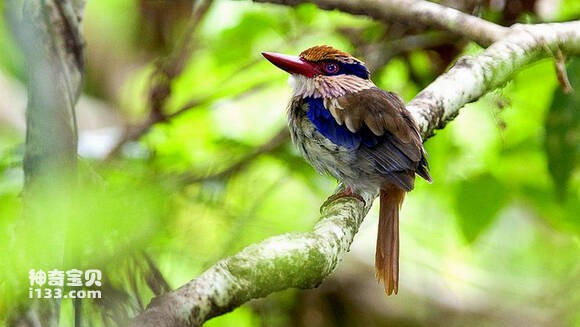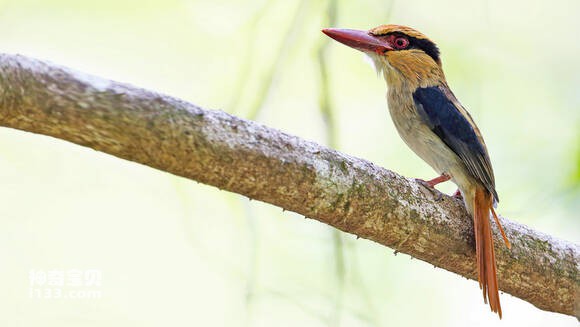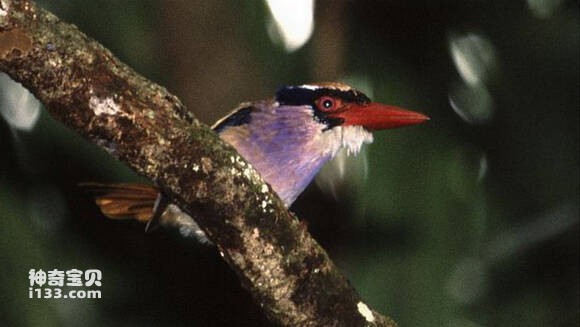Cittura cyanotis
IUCN
LCBasic Information
Scientific classification
- name:Cittura cyanotis
- Scientific Name:Cittura cyanotis,Sulawesi Blue-eared Kingfisher,Celebes flatbilled kingfishe
- Outline:Climbing birds
- Family:
Vital signs
- length:About 22 cm
- Weight:No textual research information is available
- lifetime:No textual research information is available
Feature
Good at fishing
Distribution and Habitat
The Sura blue-eared kingfisher is found only in the north, east and central parts of Sulawesi, in primary and secondary forests, regenerated forests and at altitudes from sea level to 1000 m in Indonesia. A subspecies (Cittura cyanotis sanghirensis) is found on the neighboring island of SAN and Talau.
Appearance
The Sola blue-eared kingfisher is 22 cm long. It has an olive brown upper body, chestnut-colored tail, and a powerful red beak. Eyebrows, throat and chest are lilac antelope. It has a pair of dark blue and black wings. Across a long white stripe from the shoulder. The lower chest appears pale red. There are slight differences between males and females: the male's eyes have a dark blue quality, and the front wings have the same color. Female birds, these same places black. Juvenile-like adult birds, but with more dark grayish-brown plumage and beak.
Mouth thick straight, long and firm, mouth ridge round; No nasal furrow; The wingtip is long, the first primary feathers are slightly shorter, and the third and fourth feathers are longest; Tail short round; The head is large, the neck is short, the wings are short and round, and the tail is mostly short; The mouth is long and pointed, the peak of the mouth is round and blunt, the feet are very short, the toes are thin and weak, the
Details
The species is known as Cittura cyanotis, Sulawesi Blue-eared Kingfisher, Celebes flatbilled kingfishe, and has three subspecies.

The Sura blue-eared kingfisher itself is very timid and rarely seen, stealthily hiding in the middle of adjacent branches and trunks and at the base of vegetation, crouching at low altitudes, and can remain almost motionless for long periods of time waiting for passing prey to come ashore. When you spot a target, dive for the ground. Sexual loneliness, usually live alone on the branches or rocks near the water, waiting for the opportunity to hunt, mainly to eat small fish, and eat crustaceans and a variety of aquatic insects and larvae, but also peck small frogs and a small number of aquatic plants. When a kingfisher plunges into the water, it can also maintain excellent vision because its eyes can quickly adjust the contrast in the Angle of view caused by the light in the water. So the fishing ability is very strong.

The sulla blue-eared kingfisher calls like it cries. A series of 3 or 4 syllables is quite sharp. You can compare the sound of an eagle or a cuckoo, five or six times their decibels.

The sulla blue-eared kingfisher nests, the extent of its territory and the way it behaves is almost unknown. However, and all other kingfishers that live mainly in Sulawesi are more or less similar (green-backed emerald and Red emerald) to nest in dykes or tree-dwelling.

International Union for Conservation of Nature (IUCN) Red List Conservation Level: Near Threatened.

Protect wild animals and eliminate wild meat.
Maintaining ecological balance is everyone's responsibility!








